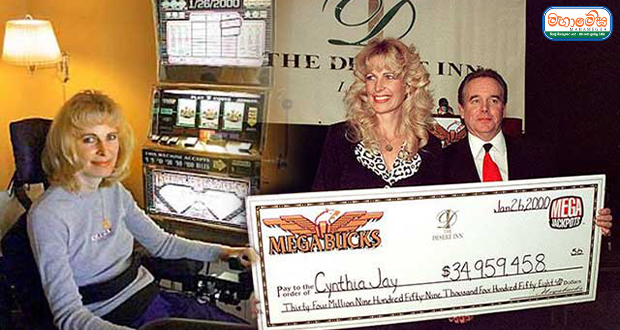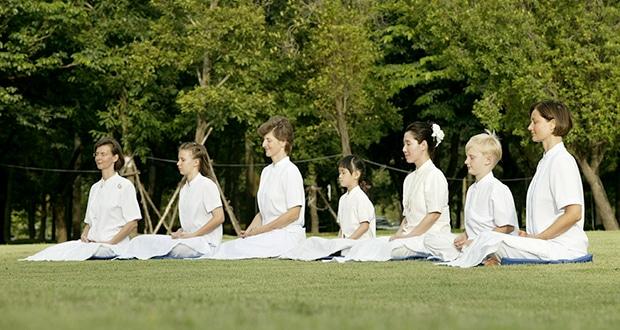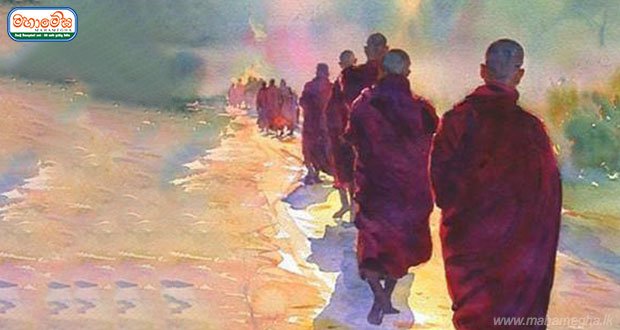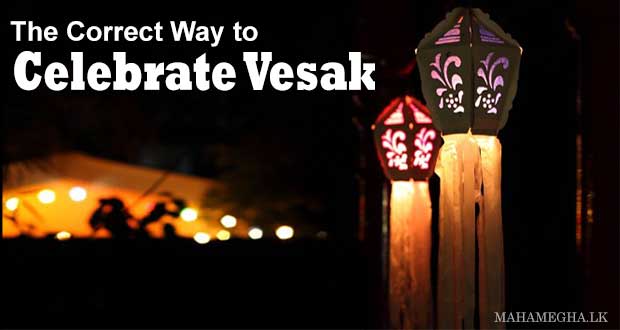The Role of Kamma in Shaping Our Lives
In the stillness of the night, Cynthia Jay-Brennan reaches a breaking point. Her blanket has slipped off her paralyzed body, leaving her shivering in the silence. Her husband, Terry Brennan, tenderly restores the cover and returns to sleep, knowing he’ll repeat this act multiple times before dawn.
Life wasn’t always this way for the couple. Once employed as a cocktail waitress and a bartender, they led a modest existence until fortune intervened. On January 26, 2000, Cynthia hit a life-altering $35 million jackpot. Yet, a mere six weeks later, tragedy unfolded—a drunk driver collided with her car, killing her sister and leaving her paralyzed from the chest down.
The Allure of Fortune
Cynthia and Terry were not habitual gamblers, but the allure of a growing Megabucks jackpot proved irresistible. Following a family celebration, Cynthia spent $21 on a slot machine to no avail. Undeterred, she invested another $6. On her final $3, luck intervened, irrevocably altering their lives.
Terry, knowing the pitfalls of sudden wealth, cautioned, “Many people change when this happens. I don’t want anything to change.” Yet change was inevitable, arriving in the cruelest form imaginable. The couple had scarcely begun to savor their newfound wealth when they were married for just five weeks, and then the accident occurred.
The Inescapable Grasp of Kamma
On that ill-fated night, Cynthia was enjoying nickel slots and live music with her family. As she and her sister Lela drove to another casino, a drunk driver, violently crashed into their car. Lela died on impact, and Cynthia was left paralyzed. “I was talking to her about how happy I was, newly married,” Cynthia reminisces. “That’s the last thing I remember.”
Grateful for the financial means to cover her medical expenses, Cynthia confessed, “I’d give every cent I have” to turn back time to the days preceding the accident.
The Profound Teachings of the Buddha on Kamma
“Bhikkhus, this body is not yours, nor does it belong to others. It is old karma, to be seen as generated and fashioned by volition, as something to be felt and experienced,” (SN 12.37)
In light of the Buddha’s teachings, Cynthia’s story serves as a compelling illustration of the complex dynamics of kamma. The Buddha instructs us that our actions, motivated by our will or volition, generate kamma, which in turn shapes our life experiences. Cynthia’s life journey, and that of each one of us, is a tapestry intricately woven from the threads of our past actions and choices.
The Six Senses and the Role of Kamma
“What, bhikkhus, is old kamma? The eye is old kamma, to be seen as generated and fashioned by volition, as something to be felt and experienced. The ear is old kamma … The mind is old kamma, to be seen as generated and fashioned by volition, as something to be felt and experienced. This is called old kamma.” (SN 35.146)
Don’t we all possess eyes, ears, a nose, a tongue, a body, and a mind? Being born into this human realm signifies the manifestation of these six senses. Thus, birth serves as the catalyst for these senses. And what causes birth? It is the arrangement of kamma coming to fruition (Bhava) that leads to birth. In essence, we are not just influenced by kamma; we are its very products.
The Individual and Universal Impact of Kamma
All our six senses have been molded by our past actions in saṁsara. This explains the diversity among us in aspects like eyesight, hearing, sense of smell, taste, physique, and mental faculties. Our skills and abilities also vary; some of us are wise, while others are not. Some have excellent memory retention, while others struggle. For some, meditation comes
easily, and their minds attain samadhi quickly; for others, meditation is a challenging endeavor.
However, although our life experiences differ due to the influence of past kamma which is unique to each and every individual, the similarity lies in that we all have to feel and experience the consequences.
Understanding “New Kamma”
Buddha also enlightened us on the concept of “new kamma.”
“And what, bhikkhus, is new kamma? Whatever action one does now by body, speech, or mind. This is called new kamma.” (SN 35.146)
To grasp this, let’s consider that we are all shaped by our old kamma, represented by our eyes, ears, nose, tongue, body, and mind. Operating from this foundation, we cling to an identity view of “I, me, mine,” and act accordingly through our body, speech, and mind. These actions constitute new kamma. Therefore, each day of our lives involves not only feeling and experiencing the results of old kamma but also accumulating new kamma through our physical, verbal, and mental actions.
The Unpredictable Nature of Kamma’s Consequences
The results of the new kamma we accumulate may manifest in this life, the next, or in any subsequent life within saṁsara, until we escape its relentless cycle. The exact timing, location, and nature of these consequences are beyond human comprehension. Only the Buddha has the wisdom to understand how actions—performed through body, speech, and mind, across past, present, and future—will manifest in terms of their outcomes.
This lack of understanding often leads to questions when we observe someone living an immoral life yet seemingly enjoying happiness and prosperity. “Why do they seem happy and well-off while we, who live ethically and righteously, suffer?”
Our misunderstanding stems from the expectation that the consequences of an evil deed should be immediate. However, as the Buddha explained:
“While milk may curdle quickly, the consequences of an evil deed don’t manifest immediately. Instead, much like embers smoldering under a layer of ash, the repercussions of the evil deed lie dormant, only to ignite later and relentlessly pursue and burn the foolish individual.” (Dhp 71)
Therefore, it’s clear that the consequences of an evil deed may not be immediate. When they do manifest, there is no escape; one must simply endure.
Embracing Acceptance in the Face of Karmic Forces
The Buddha counsels that when we find ourselves unable to surmount hardships or alleviate suffering despite our best efforts, despair is not the answer. Instead, we should acknowledge the role of our past kamma, understanding that certain outcomes are simply beyond our control. Rather than dwelling on what cannot be changed, it is wiser to accept the situation. This acceptance comes with the recognition that powerful karmic forces are at play, and at that moment, patient endurance is the only course of action.
The Path to Acquiring Good Kamma
Understanding the unforgiving nature of kamma, it becomes imperative to be ever-mindful of our actions—whether they are carried out by body, speech, or mind. We should abstain from unwholesome bodily actions such as killing living beings, stealing, and sexual misconduct.
Similarly, we should avoid unwholesome verbal actions like false speech, divisive speech, harsh speech, and frivolous speech. On the mental front, we should steer clear of covetousness, ill will, and wrong views. By engaging in wholesome actions across these three dimensions, we set ourselves on a path to acquire good kamma, which inevitably leads to favorable outcomes.
The Ultimate Liberation: Cessation of Kamma Through the Noble Eightfold Path
Buddha also taught us the path to halt the accumulation of kamma.
“And what, bhikkhus, is the cessation of kamma? When one reaches liberation through the cessation of bodily action, verbal action, and mental action, this is called the cessation of kamma.”
“And what, bhikkhus, is the way leading to the cessation of kamma? It is this Noble Eightfold Path; that is, right view, right intention, right speech, right action, right livelihood, right effort, right mindfulness, right concentration.” (SN 35.146)
The key to liberation lies in the practice of the Noble Eightfold Path. As you cultivate this path within yourself, you begin to experience its transformative fruits. Gradually, you achieve the cessation of kamma. Attaining the first stage of enlightenment, known as stream-entry, eradicates the kamma that could lead to rebirth in hellish realms. Reaching the stage of once-returner ensures that you will only be reborn in the sensual realm once more. Achieving the stage of non-returner eliminates all kamma that could result in rebirth in the sensual realm. Finally, fulfilling the Noble Eightfold Path and attaining the state of an Arahant eradicates all kamma.
Therefore, the practice of the Noble Eightfold Path is our singular solution for liberation from the unyielding grip of kamma. Failure to do so may result in a fate as tragic as Cynthia’s—or potentially even worse—repeated countless times in the cycle of saṁsaric existence.
The Journey Towards Karmic Liberation: A Choice We Must Make
In the intricate workings of kamma, every action we undertake serves as a causal link, shaping the contours of our lives and our rebirths. The teachings of the Buddha offer not just an explanation but a solution—a path to halt the relentless cycle of kamma. By diligently practicing the Noble Eightfold Path, we can aspire to reach the ultimate liberation, freeing ourselves from the chains of samsaric existence.
Cynthia’s story serves as a poignant reminder of the inexorable nature of kamma. Yet, it also illuminates the path we can choose to follow—a path that leads to understanding, acceptance, and ultimately, liberation. The choice is ours to make, and the time to make it is now.
By a Venerable Monk of the Mahamevnawa Buddhist Monastery












Recent Comments